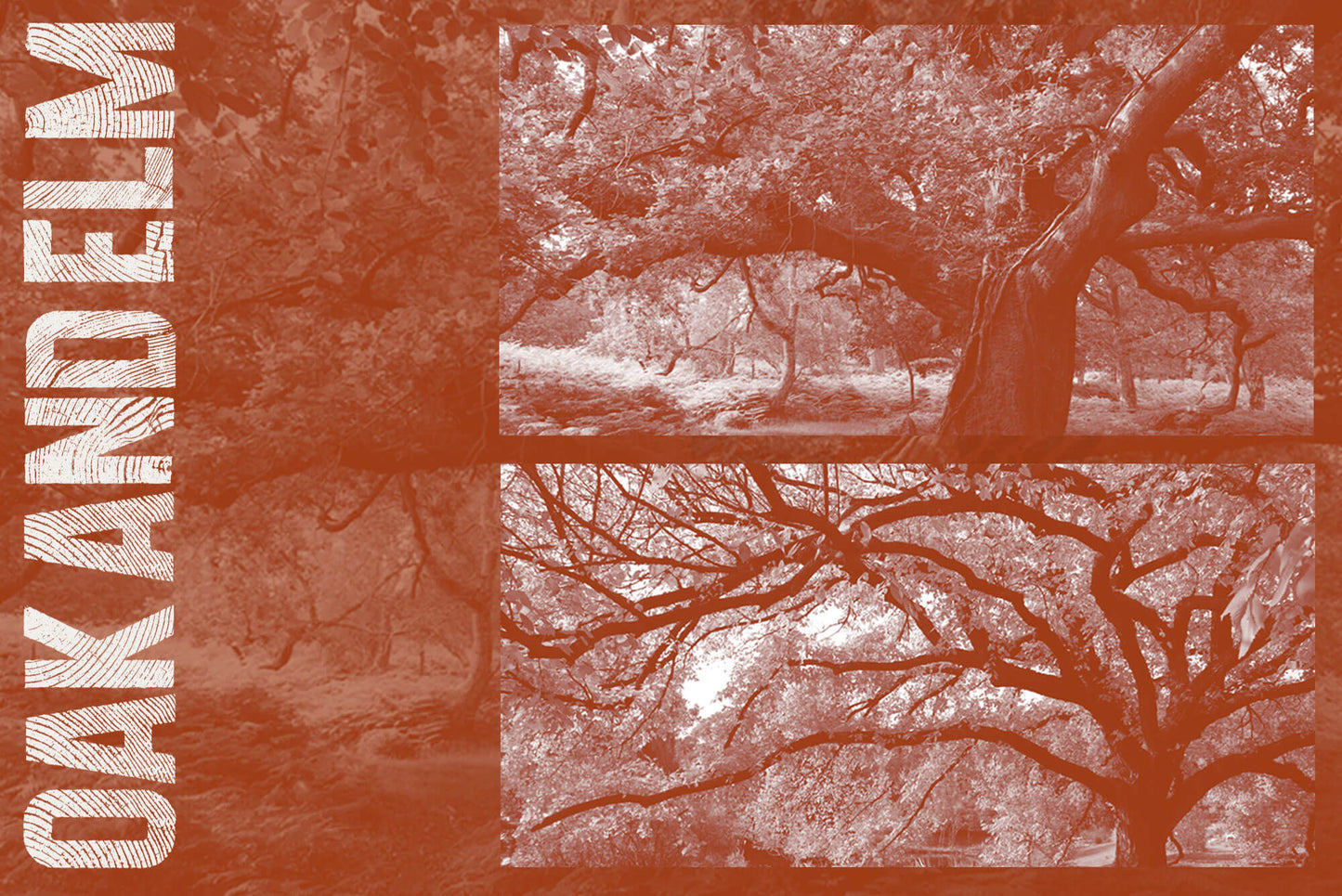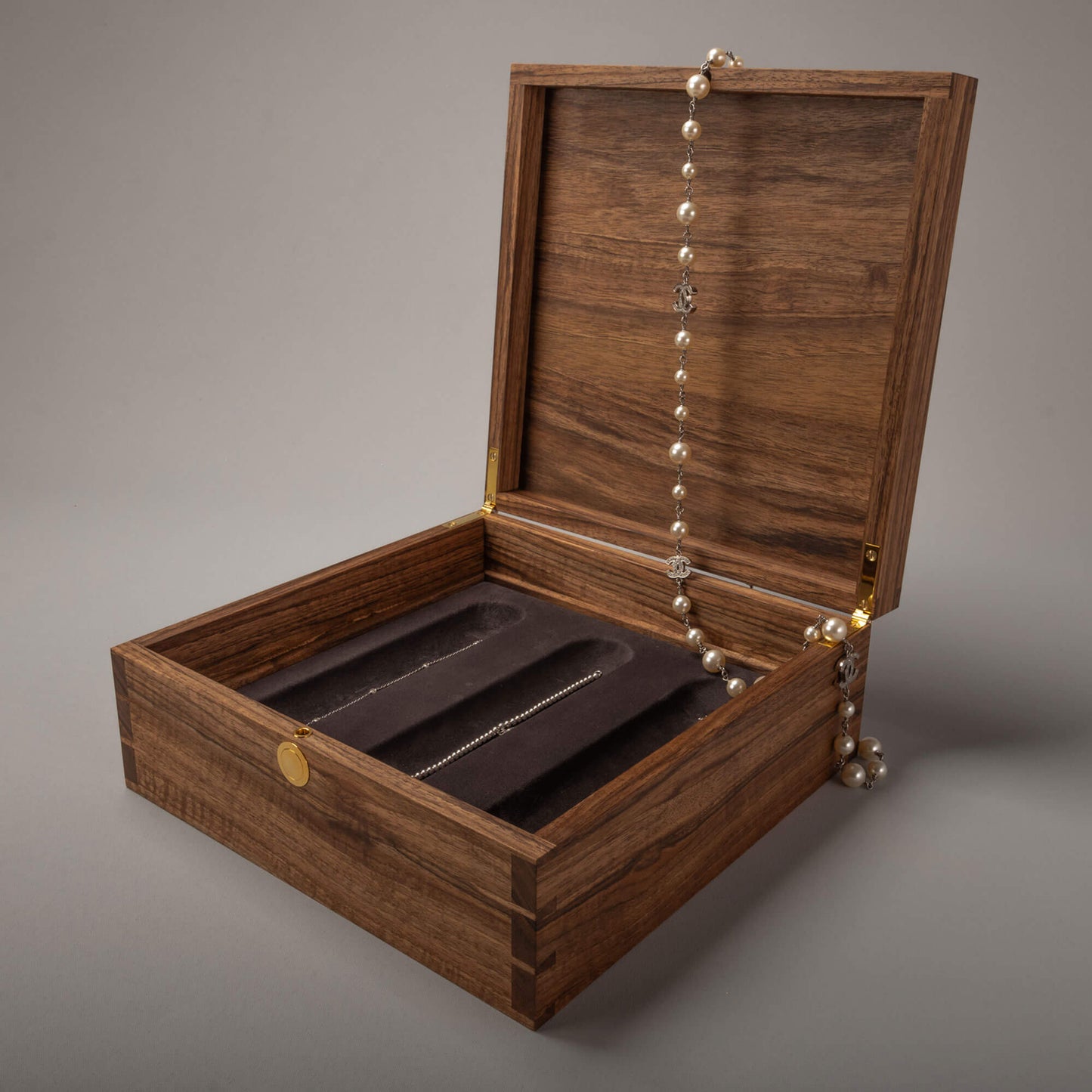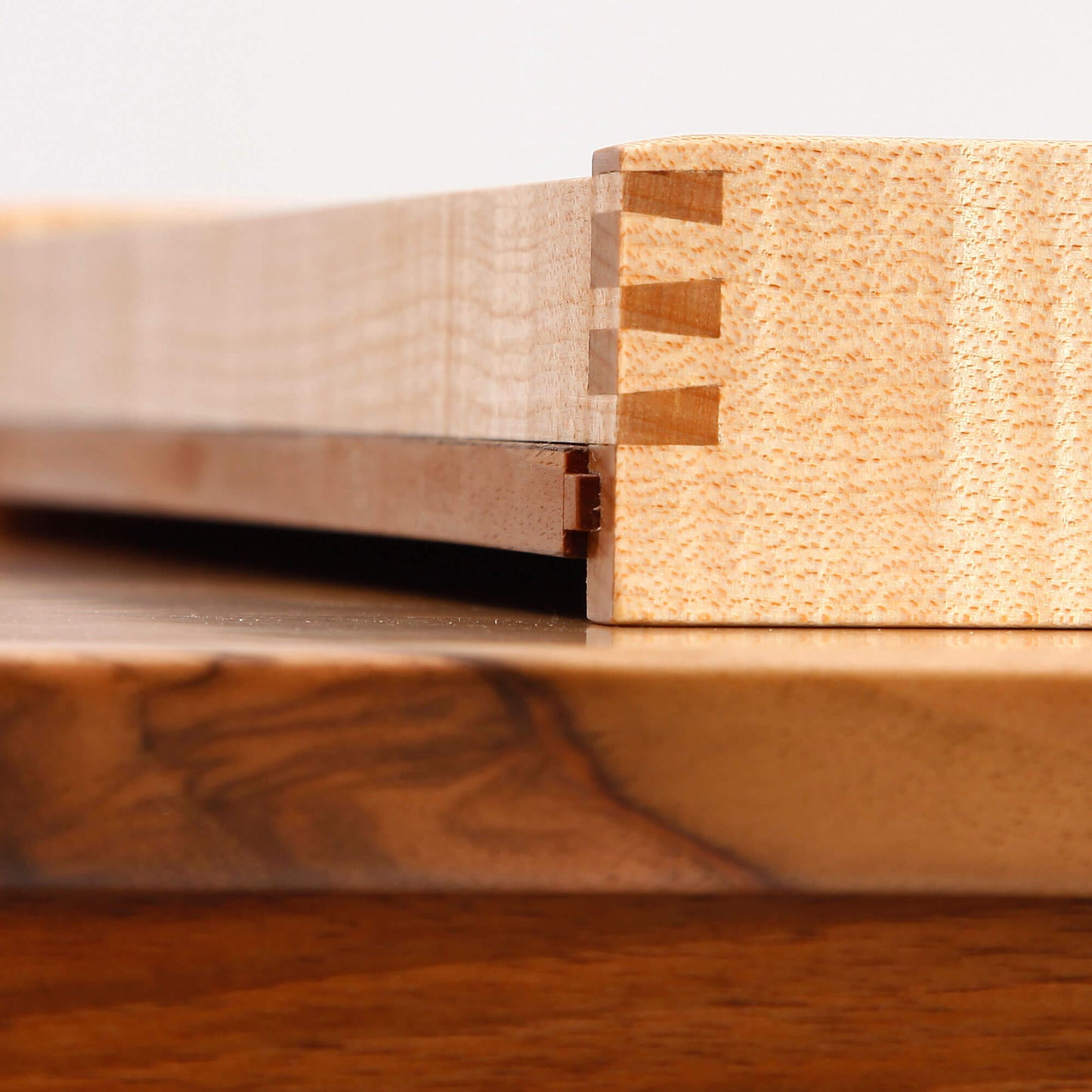
My next few blogs are going to shine a light on specific wood types that I enjoy working with for different reasons. I’m passionate about caring for woodland and using sustainable processes in my practice. Looking after woodland is crucial for many reasons, a few are below.
Woodlands capture and store carbon, helping to mitigate climate change. They provide habitats for countless species, supporting rich ecosystems. Trees stabilise soil, prevent erosion, and contribute to cleaner water sources. Woodlands offer spaces for recreation, improve air quality, and contribute to mental health. In this first blog we uncover the characteristics of Oak and Elm wood species and learn a few interesting stories and myths relating to both wood types.
Oak
Oak is dense, with a Janka hardness around 1,360, which makes it tough enough for heavy-use furniture and high-traffic flooring. While its open grain requires a little extra attention for a smooth finish, Oak is straightforward to work with and forgiving for both beginners and pros. Its wide availability keeps it affordable, and Oak’s reliable durability makes it a timeless choice.

Oak for me is the go-to material for English furniture. I had the opportunity to purchase some Brown Oak, a deeper shade than regular Oak, and I made an occasional table for a very dear friend in Halse, Somerset (images shown below). The piece was simple in nature with an open and pleasing grain and a warm, rich and dark classic Walnut tone.


Anne’s Breakfast Table, English Brown Oak
This piece was made at Williams & Cleal during the Occasional Table project. The design is simplified without the sliding drawer construction and sides to hold a tray. Anne and Stephen use the table every day to serve breakfast in their living room, overlooking their beautiful garden in Halse, Somerset UK. I had visited them often while staying in Halse during my time on the one year fine furniture designer maker course, and quickly understood the brief. A tray was produced with a fold away stand, but then having looked at the high quality finish of the house’s extensive renovations in the last 15 years, I decided a new piece in Brown Oak was required.

Oak’s strength and classic look have made it a cornerstone of European and American architecture and furniture.
Church Interiors: Oak was the main wood for Gothic and medieval church interiors across Europe, including in Notre-Dame, where it was used even in the roof structure.
Colonial Furniture: Oak was the go-to for Tudor and Jacobean furniture, like panelled chests and chairs. Many of these pieces are museum staples today.
Arts and Crafts Movement: In the early 20th century, Oak took centre stage in the Arts and Crafts movement, especially in William Morris’s and Gustav Stickley’s designs. Stickley’s mission-style furniture made Oak timelessly popular.
Oak's association with the gods of thunder may have come from the phenomenon that Oaks are often split by lightning being the tallest trees standing in the landscape.
More recently Oak was the sacred wood burnt by the druids for their mid-summer sacrifice.
Elm
Elm has a distinct light brown colour with a reddish hue and often features darker streaks, giving it depth. Its unique, interlocking grain gives it an interesting texture that brings a rustic appeal to any piece. This same grain also makes Elm resistant to splitting, which is a bonus for creating functional, durable furniture.

Elm’s moderate hardness and natural durability make it a go-to for projects that need resilience. Its interlocking grain makes finishing a bit challenging, but when done right, the wood takes stain beautifully, enhancing its attractive patterns. Elm can be harder to find these days due to Dutch Elm disease, but its rustic beauty makes it worth the search.
Elm is a precious material as most of the stock has now become extinct so having a few boards in my workshop in Dubai is very special!
Elm’s resistance to splitting has made it a staple for tough, practical pieces.
Rustic English Furniture: Elm was often used for Windsor chairs and farmhouse tables in 18th-century England, where it’s still appreciated for its durability.
Victorian Bentwood Chairs: In Victorian England, Elm’s flexibility made it perfect for bentwood furniture, and many of these durable pieces are still around.
Chinese Ming Dynasty Pieces: During China’s Ming Dynasty, Elm was popular for elegant, simple furniture like benches and cabinets. These antique pieces are now highly collectible for their timeless beauty and durability.
Elms have been associated with death and the underworld since ancient times, and there are several superstitions about them:
Dangerous: Elms are known to drop heavy branches unexpectedly, sometimes with fatal consequences. This led to the saying "Elm hateth man, and waiteth".
Guardians of the dead: Elms were often planted at the doors of tombs to guide and protect the dead.
Coffin wood: Elm wood was traditionally used to make coffins, possibly because of its durability underground.
Deadly in warfare: Elm wood was used to deadly effect in medieval warfare.
Celtic mythology: In Celtic mythology, Elms are associated with the underworld and are said to grow near passageways to the underworld.
Useful links for further reading:
woodlandtrust.org.uk
woodlandheritage.org

